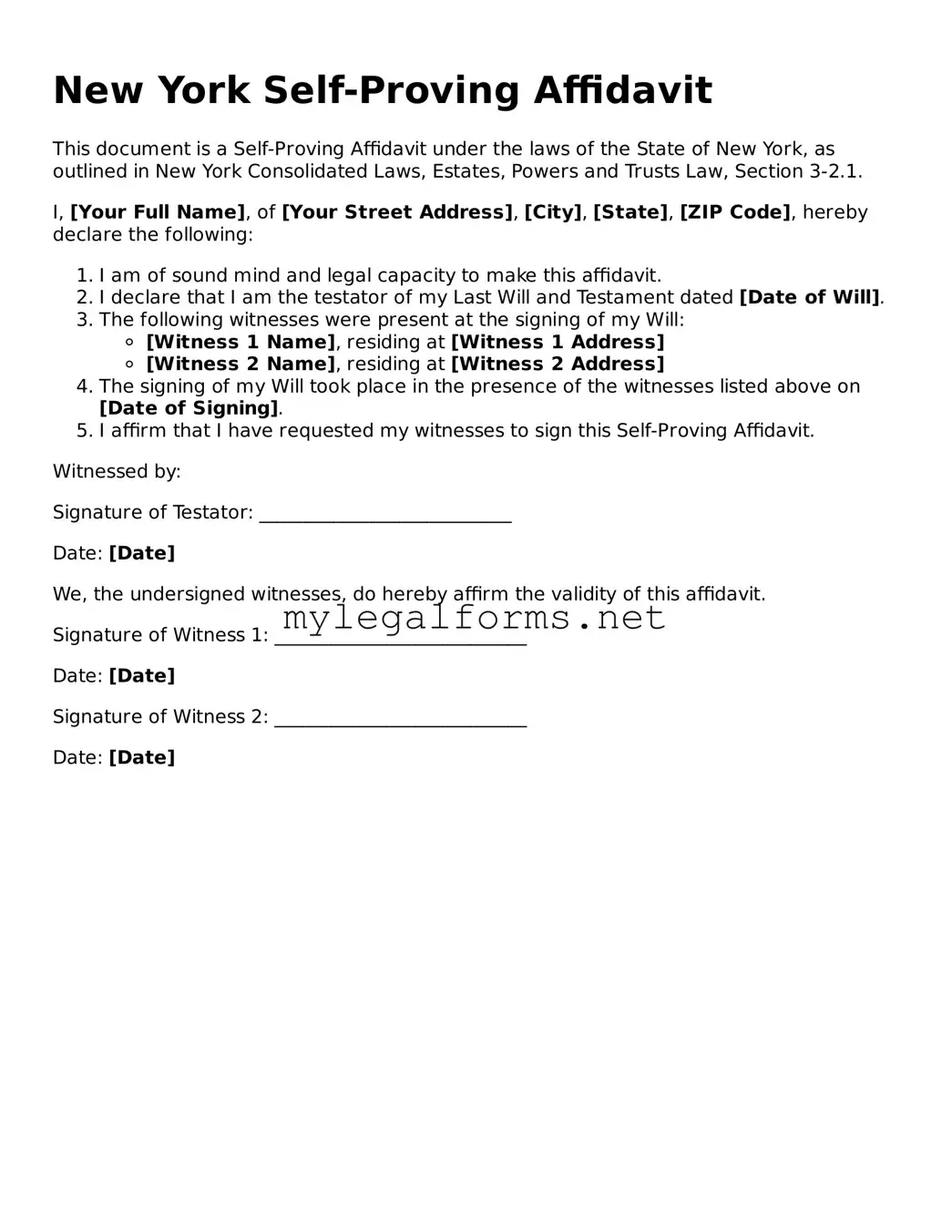New York Self-Proving Affidavit
This document is a Self-Proving Affidavit under the laws of the State of New York, as outlined in New York Consolidated Laws, Estates, Powers and Trusts Law, Section 3-2.1.
I, [Your Full Name], of [Your Street Address], [City], [State], [ZIP Code], hereby declare the following:
-
I am of sound mind and legal capacity to make this affidavit.
-
I declare that I am the testator of my Last Will and Testament dated [Date of Will].
-
The following witnesses were present at the signing of my Will:
- [Witness 1 Name], residing at [Witness 1 Address]
- [Witness 2 Name], residing at [Witness 2 Address]
-
The signing of my Will took place in the presence of the witnesses listed above on [Date of Signing].
-
I affirm that I have requested my witnesses to sign this Self-Proving Affidavit.
Witnessed by:
Signature of Testator: ___________________________
Date: [Date]
We, the undersigned witnesses, do hereby affirm the validity of this affidavit.
Signature of Witness 1: ___________________________
Date: [Date]
Signature of Witness 2: ___________________________
Date: [Date]
